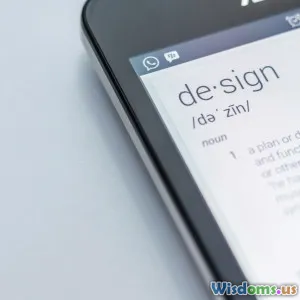
Building a Personal Brand as a Designer
6 min read Learn how to craft a compelling personal brand as a designer to stand out in a competitive marketplace. (0 Reviews)
Building a Personal Brand as a Designer
In the ever-evolving world of graphic design, standing out from the crowd is crucial. As a designer, your personal brand is not just about your portfolio; it encompasses your values, your style, and how you communicate with your audience. This article will guide you through the process of building a personal brand that resonates with clients and peers alike, ensuring that you leave a lasting impression in a competitive marketplace.
Understanding Personal Branding
Personal branding is the practice of marketing yourself and your career as a brand. It involves defining who you are, what you stand for, and how you want to be perceived by others. For designers, a strong personal brand can lead to more opportunities, higher visibility, and a greater sense of fulfillment in your work.
Why Personal Branding Matters
-
Differentiation: In a saturated market, a unique personal brand helps distinguish you from other designers. Clients are more likely to remember and prefer a designer with a distinct identity.
-
Trust and Credibility: A well-crafted personal brand builds trust. When potential clients can see a consistent and professional brand image, they’re more likely to feel confident in choosing you for their projects.
-
Networking Opportunities: A strong personal brand can open doors to networking opportunities. When people know who you are and what you do, they are more likely to refer you to others.
Steps to Build Your Personal Brand
1. Define Your Unique Value Proposition (UVP)
Your UVP is what makes you unique as a designer. This could be your design style, your approach to problem-solving, or your specialty in a particular niche. To define your UVP, ask yourself:
- What skills do I excel at?
- What are my passions within design?
- How do I want my audience to perceive me?
2. Create a Cohesive Visual Identity
A cohesive visual identity is crucial for a strong personal brand. This includes your logo, color palette, typography, and overall aesthetic. Your visual identity should reflect your personality and design philosophy.
- Logo: Design a logo that embodies your style and can be used across all platforms.
- Color Palette: Choose colors that resonate with your brand values and evoke the right emotions.
- Typography: Select fonts that align with your brand image, ensuring readability and consistency.
3. Develop an Online Presence
In today’s digital age, having a strong online presence is essential. Here are some platforms to consider:
- Website: A personal website serves as your portfolio, showcasing your best work and providing potential clients with a way to contact you.
- Social Media: Utilize platforms like Instagram, LinkedIn, and Behance to share your work, connect with other designers, and engage with your audience.
- Blog: Writing articles or blogs about design topics you’re passionate about can establish you as an authority in your field and improve your SEO.
4. Network and Collaborate
Networking is vital in the design community. Attend design conferences, workshops, or local meetups to connect with other designers and industry professionals. Collaboration can also enhance your brand visibility. Partner with other creatives on projects to expand your reach and introduce your work to new audiences.
5. Consistency is Key
Consistency across all platforms is crucial to building a recognizable brand. This includes the tone of your communications, the style of your visuals, and how often you engage with your audience. A consistent brand helps reinforce your identity and makes you more memorable.
Evolving Your Brand
As you grow as a designer, your personal brand should evolve with you. Regularly assess your brand and be willing to make adjustments as needed. Seek feedback from peers and clients to understand how your brand is perceived and make changes that align with your growth.
Conclusion
Building a personal brand as a designer is an ongoing journey that requires introspection, creativity, and strategy. By defining your unique value, creating a cohesive visual identity, establishing an online presence, networking, and maintaining consistency, you can craft a brand that not only stands out but also resonates with your target audience. Embrace the process, be authentic, and watch your personal brand flourish in the design landscape.
Rate the Post
User Reviews
Popular Posts





















